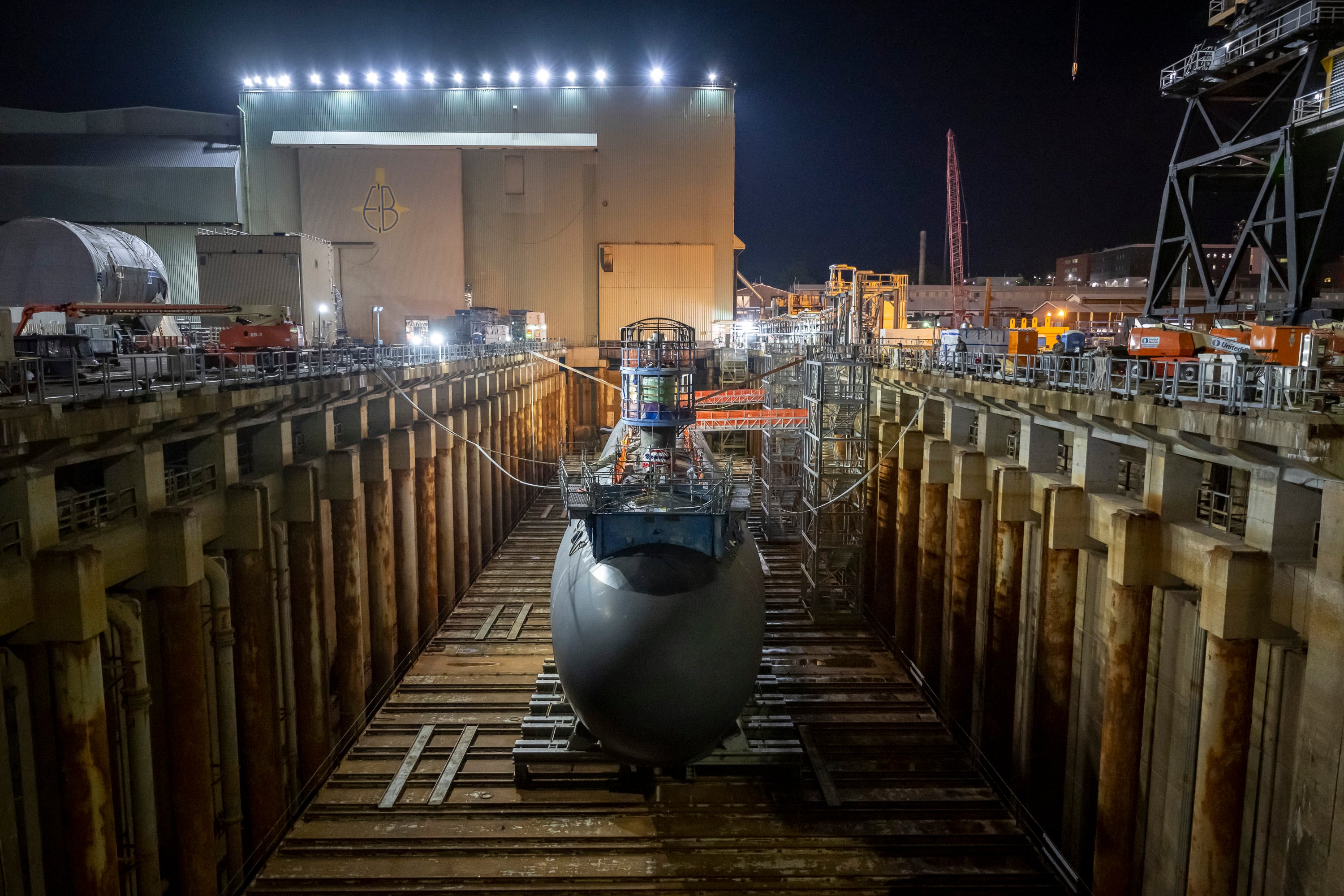A House panel has made clear it wants the Navy to buy two attack submarines in fiscal 2025 in order to keep the submarine-industrial base on a path of recovery, despite the service requesting just one.
In a fiscal year when the defense budget is capped at 1% growth above the previous one, the Navy elected to ask for six ships in its FY25 budget, including one Virginia-class attack submarine. That submarine program is supposed to be on a cadence of two per year or greater to support the needs of both the U.S. and Australian navies. The latter is acquiring submarines as part of the trilateral AUKUS agreement also involving the U.S. and the U.K.
U.S. Navy leaders have argued that, in lieu of buying the second submarine, they are keeping the advanced procurement funds flowing and putting billions of dollars into the submarine-industrial base via funds meant to help increase vendors’ output.
But Rep. Joe Courtney, D-Conn., whose district includes the shipbuilder General Dynamics Electric Boat, said during a Wednesday hearing before the House Armed Services Committee’s sea power panel: “I reject the ivory tower theory that SIB [submarine-industrial base] investment is a substitute for a consistent demand signal for orders and business. The two enterprises have to occur in tandem.”
Courtney, the subcommittee’s ranking member, said the funds are welcome but “don’t pay the bills” — rather, they help companies, among other things, adopt advanced manufacturing processes and tools, expand their facilities, and train workers, with the ultimate goal of more quickly churning out parts.
Courtney told reporters ahead of the hearing that these funds are targeted at certain vendors rather than spread evenly across the whole industrial base. Companies who are healthy and producing their components on time are not receiving these funds at all, meaning their only stream of money from the Navy comes from orders for new submarines.
“For them, they’re basically looking at a 50% cut” to their revenue, per the Navy’s spending proposal, the congressman said.
When Courtney asked Navy acquisition chief Nickolas Guertin about this during the hearing, the latter replied: “We’ll have to take a closer look at that and see what we can do to help that aspect of the industry as well.”
“That’s not a very encouraging answer,” the congressman responded.
More broadly, Courtney told reporters he rejected the two common rationales for why the Navy doesn’t need to buy the second submarine in FY25: first, that the procurement dollars can be compensated for with advanced procurement money and industrial base funds; and second, that there’s such a backlog of work that Electric Boat and its vendor base won’t miss the work.
He told reporters the Navy is on track to accept delivery of three Virginia submarines this calendar year, leaving the industrial base with a remaining backlog of work that’s not far off from what it had before the COVID-19 pandemic.
“To me, what I see is that our industrial base is recovering from COVID, that the numbers are going up, the retention is going up, and the output is going up,” Courtney said during the hearing. “This is not a stagnating industrial base. It is an industrial base which took a big hit during COVID, like all of shipbuilding, but it is not stagnating; it is recovering.”
Ahead of the hearing, Courtney circulated a memo to his fellow lawmakers, laying out the progress the submarine-industrial base has made since the pandemic hit and explaining why he believes their momentum should continue uninterrupted by allowing for continuous procurement at a rate of two per year.
He wrote that Electric Boat hired 5,300 new workers in 2023 and is on track to hire 5,200 more this year, even as co-builder Newport News Shipbuilding, owned by HII, hired 8,300 new workers across 2022 and 2023. Submarine construction rates are up from 1.2 a year to 1.4 a year (compared to the two submarines a year the yards should deliver if the Navy consistently buys two annually). And new facilities at the shipyards are popping up to help make shipbuilding even more efficient.
Courtney said arguments that the industrial base is struggling and therefore doesn’t need or can’t handle a second submarine in FY25 are “looking backwards, not forwards, in terms of what’s actually happening in the shipyard.”
Still, Courtney and his supporters on the subcommittee face an uphill battle in putting the second submarine back into the budget. The Fiscal Responsibility Act caps defense spending, meaning that any additions lawmakers propose will need to come at the expense of something else. Courtney told reporters he didn’t have a recommendation for what to cut to make room for the sub.
Lawmakers at the hearing also dinged the Navy for delaying advanced procurement for its next two aircraft carriers, and for not committing yet to a multiyear buy on San Antonio-class amphibious transport docks.
“I think we have the greatest shipbuilders and repairers and maintainers in the world. But we have to send them the right signal, all the time. We have to give them predictable schedules of both repair and building,” the subcommittee’s chairman, Rep. Trent Kelly, R-Miss., said at the hearing.
“We can’t send mixed signals, and we can’t tell them to pause or put on the brakes or take a strategic pause. And we have to use multiyear buys, understanding that it’s always not financial benefits that we gain, but sometimes it’s the benefit in time, to produce more in a short time.”
Megan Eckstein is the naval warfare reporter at Defense News. She has covered military news since 2009, with a focus on U.S. Navy and Marine Corps operations, acquisition programs and budgets. She has reported from four geographic fleets and is happiest when she’s filing stories from a ship. Megan is a University of Maryland alumna.





